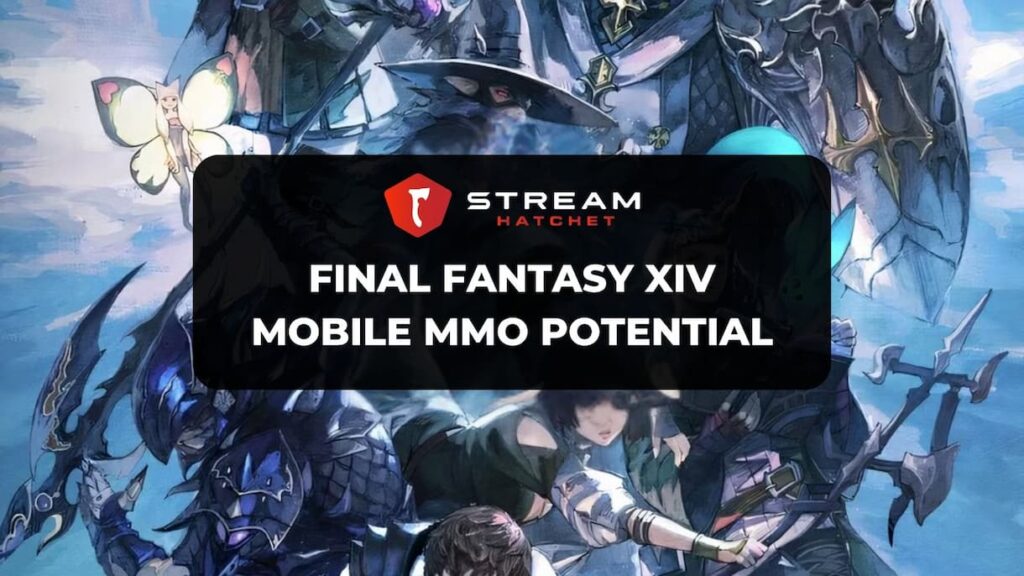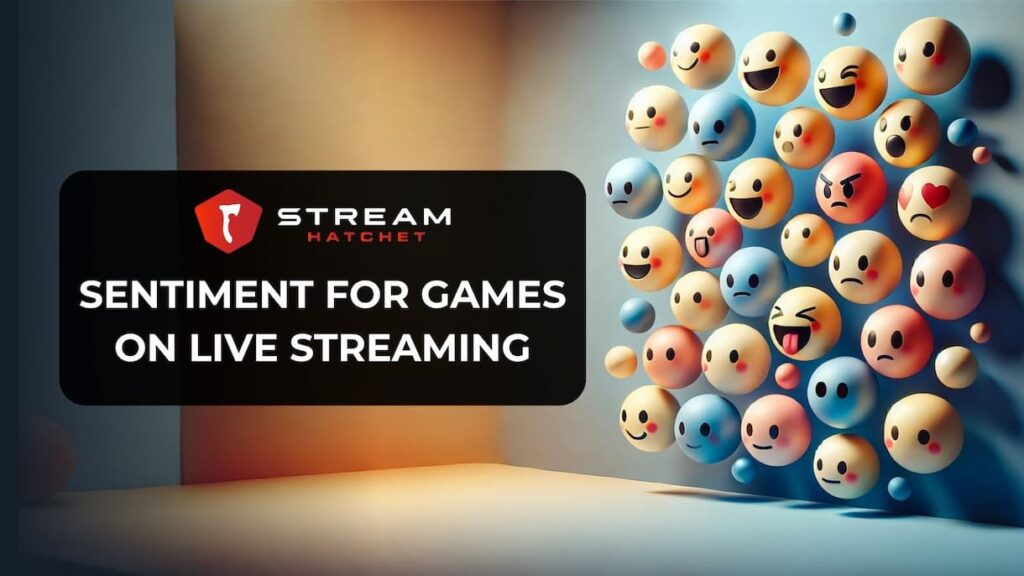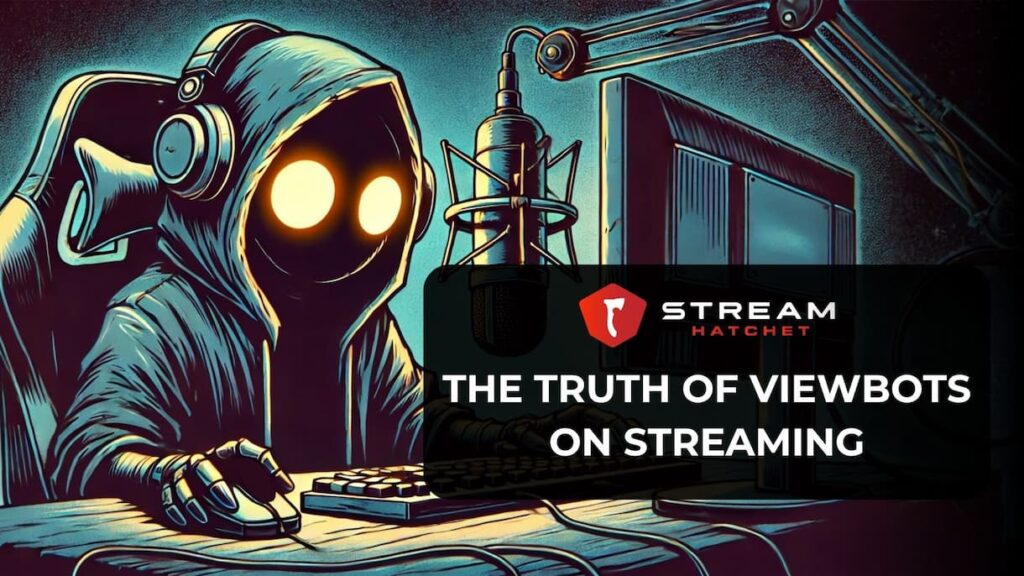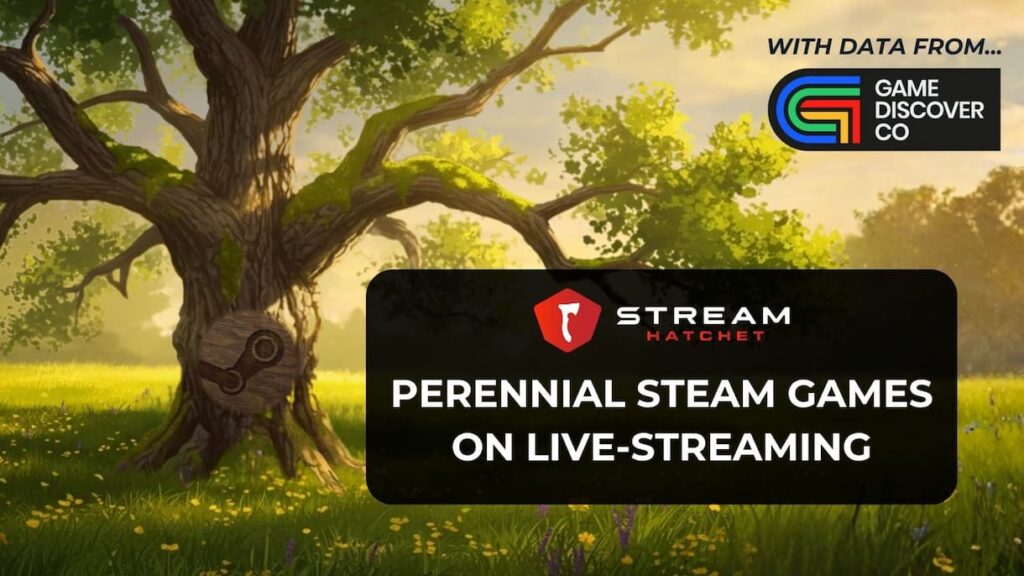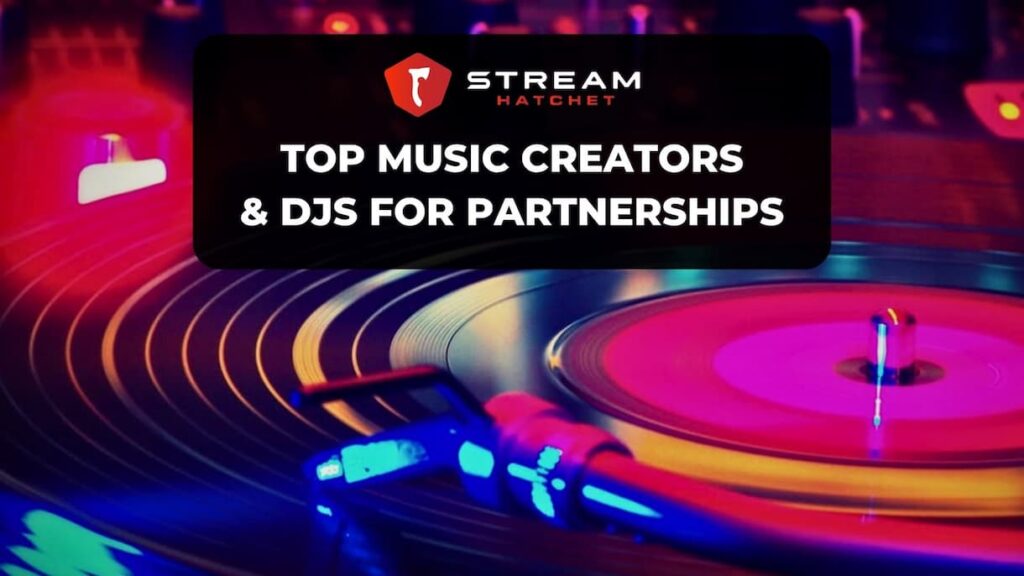MMOs offer virtual worlds that foster online communities. Last time we looked at MMOs, we saw how these communities often overlap with live-streaming communities, finding new avenues to express their passion for their favourite titles. But for players and viewers alike, they’re often forced to drag themselves away from these virtual worlds when they leave their PC. Except, of course, for Mobile MMOs that give them access to their character at any time.
A number of big IP MMOs have already made the leap to a mobile format, but one upcoming port has serious buzz around it. In November 2024, Square Enix officially announced that Final Fantasy XIV: A Realm Reborn would be coming to mobile. We also know that Square Enix is actively looking for content creators who want to engage with new releases, investing serious effort to grow their base of passionate influencers. So the question is: How can streamers and live-streaming activations help get the word out about the Final Fantasy XIV mobile port?
Final Fantasy XIV Can Count On Streamers To Promote New Content

First of all, let’s look at how the live-streaming community has supported Final Fantasy XIV so far. Going right back to 2017, Final Fantasy XIV has never sunk below 3M quarterly hours watched, with its post-pandemic viewership sitting in the tens of millions per quarter. As is typical for MMOs and live service games, viewership usually jumps up in quarters when new content is released, like 2019’s Shadowbringers and 2024’s Dawntrail expansions. Crucially, however, Final Fantasy XIV’s all-time highest quarterly viewerships come from massive streamer collabs, like the Hololive VTuber collab in Q3 2021 (59.1M hours watched) and k4sen’s creator collab in Q3 2024 (32.6M hours watched) which coincided with Dawntrail’s release. Q3 always seems to be a big quarter for Final Fantasy XIV – a trend that may continue based on leaks suggesting that Final Fantasy XIV’s mobile port will release on August 29th this year.
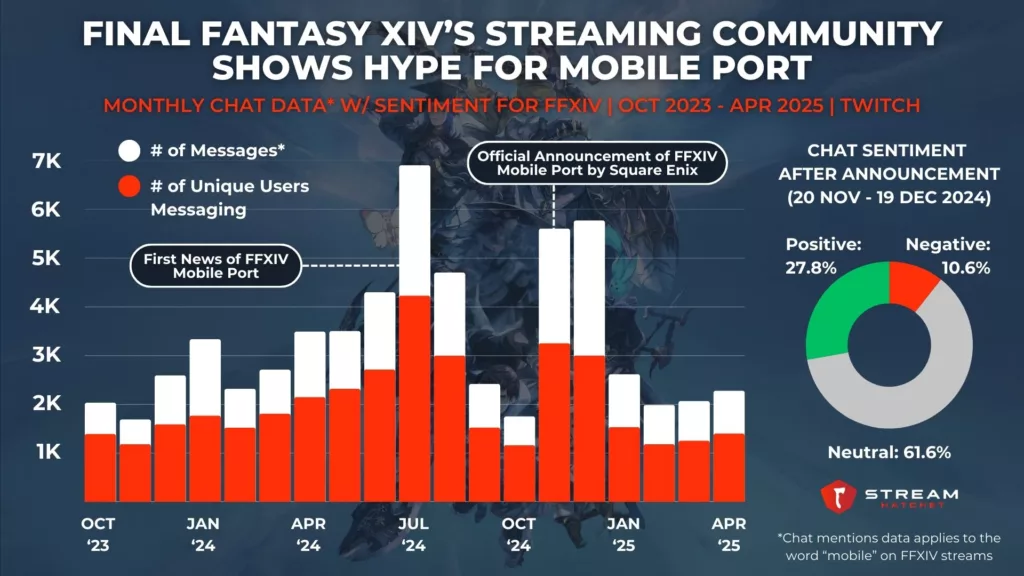
If streamers turn out to support Final Fantasy XIV’s mobile port in the same way as they have for other new content releases, then we’re sure to see another surge in viewership upon its release. Chat mentions on Twitch definitely suggest hype for the mobile port, with spikes in mentions of “mobile” on Final Fantasy XIV streams when news first broke about the mobile port back in July 2024, and another peak when Square Enix officially announced the port in November of 2024. Twitch users were generally positive about the news, with 27.8% of all chat mentions being positive after the official announcement (compared to just 10.6% of negative chat mentions). All of this seems to suggest that the game’s core fan base are aware and supportive of the port… but do Mobile MMOs get the attention of their PC counterparts among streamers?
Mobile MMOs are Under-represented Among MMOs on Live Streaming
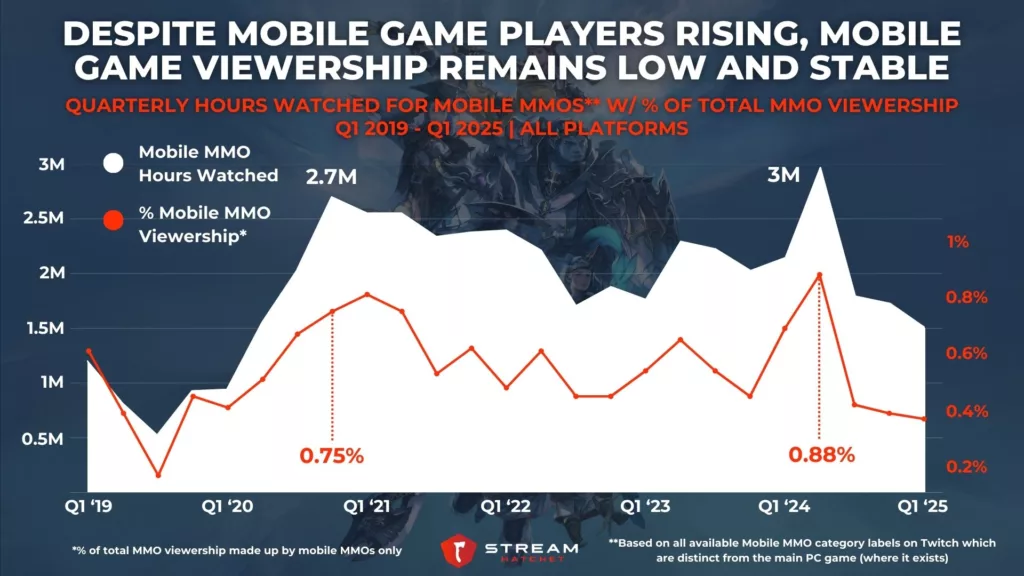
The unfortunate truth is that Mobile MMOs don’t seem to be that popular on live streaming. Across the last five years, quarterly Mobile MMO viewership has never broken more than 1% of all MMO viewership, typically hovering around just 0.6%. This is particularly low when you consider that means just ~1.5M hours watched for every Mobile MMO game combined on average per quarter. This does come with an important caveat: We can only track Mobile MMO viewership specifically when the MMO is either mobile only, or when platforms offer a specific category for the mobile version of the original PC game (in the latter case, streamers do seem to correctly tag their streams under the mobile category when given the option).
The reason behind this lack of viewership isn’t just low game popularity: Black Desert Mobile has over 10M downloads on the Google Play store compared to a slightly higher 13.6M registered players for the PC version of Black Desert. So if the mobile version is still popular, why the low viewership? It may be as simple as this: Streamers who already own a PC and stream on PC want to also play their MMOs on PC. Most MMO players are hardcore gamers with rigs that can run MMOs at their full specs – streaming the mobile version would be an unnecessary downgrade in that situation. Note that this discrepancy between PC and mobile game attention doesn’t apply to other genres: Mobile esports like PUBG Mobile and Mobile Legends: Bang Bang draw in massive viewerships as seen at the Esports World Cup, and exclusively mobile games like Supercell’s Brawl Stars also perform well.
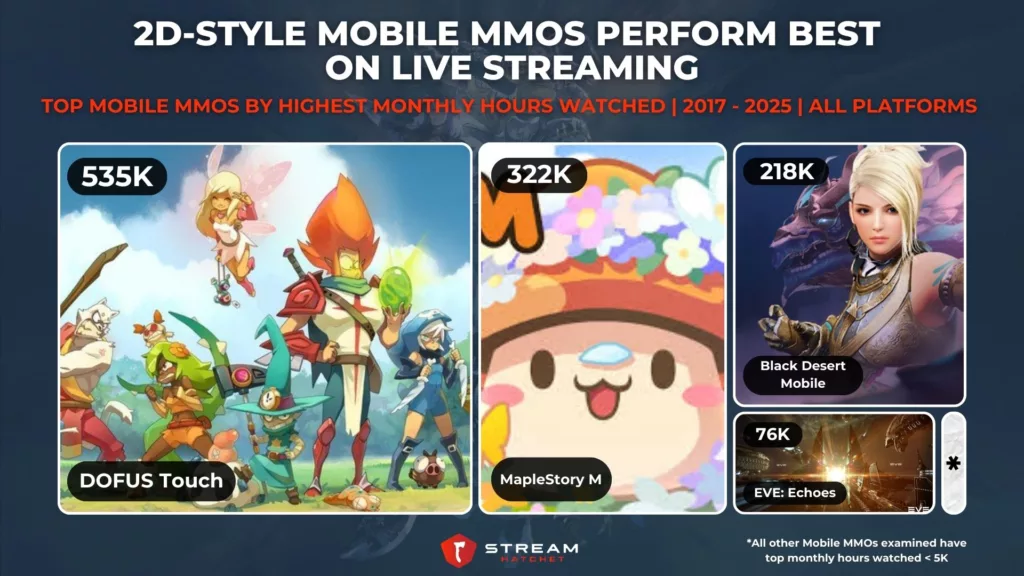
Back on Mobile MMOs, only a few of these titles have had significantly high viewerships in past months. The top Mobile MMO by highest historical monthly hours watched was DOFUS Touch with 535K hours watched. Usually DOFUS Touch doesn’t get nearly this much attention, but in that particular month there was a Twitch Drops event for the game which was well-supported by French streamers like Humility and Fekah_. The more important take away here is the style of these games: Both DOFUS Touch and MapleStory M are 2D-style, casual MMOs with a younger-leaning audience (though not kid-friendly, it should be said). This supports our earlier theory that people streaming on PC want to show off full PC-spec versions of MMOs, whereas these 2D-style MMOs don’t benefit as much from playing the PC version.
_
Let’s look at the wins that Mobile MMOs and Final Fantasy XIV have had. The strong support for DOFUS Touch’s Twitch Drops campaign, and the historically massive viewership generated by streamer collabs for Final Fantasy XIV suggest that with a dedicated influencer marketing activation, Square Enix could bring word of their mobile port to their community. Square Enix should consider how an interesting campaign could highlight the advantages of fans being able to play their favourite MMO on-the-go – say, sponsoring streamers to travel together while playing Final Fantasy XIV on mobile. Alternatively, Square Enix could encourage existing players to download the app with Twitch Drops rewards only claimable via the mobile version of the game.
In either case, any influencer marketing around the mobile port’s launch should also be supported with other platforms beyond live streaming. Mobile-friendly apps like TikTok would make particularly good avenues for reaching new mobile-only players. There’s also room for mobile MMO developers to find a niche on live streaming by creating a title well-suited to live-streaming communities. You can read more in-depth insights on general mobile trends on live streaming here to see what ideas might work in capturing that audience.
To keep up to date with the latest popular genres on live-streaming platforms, follow Stream Hatchet:

